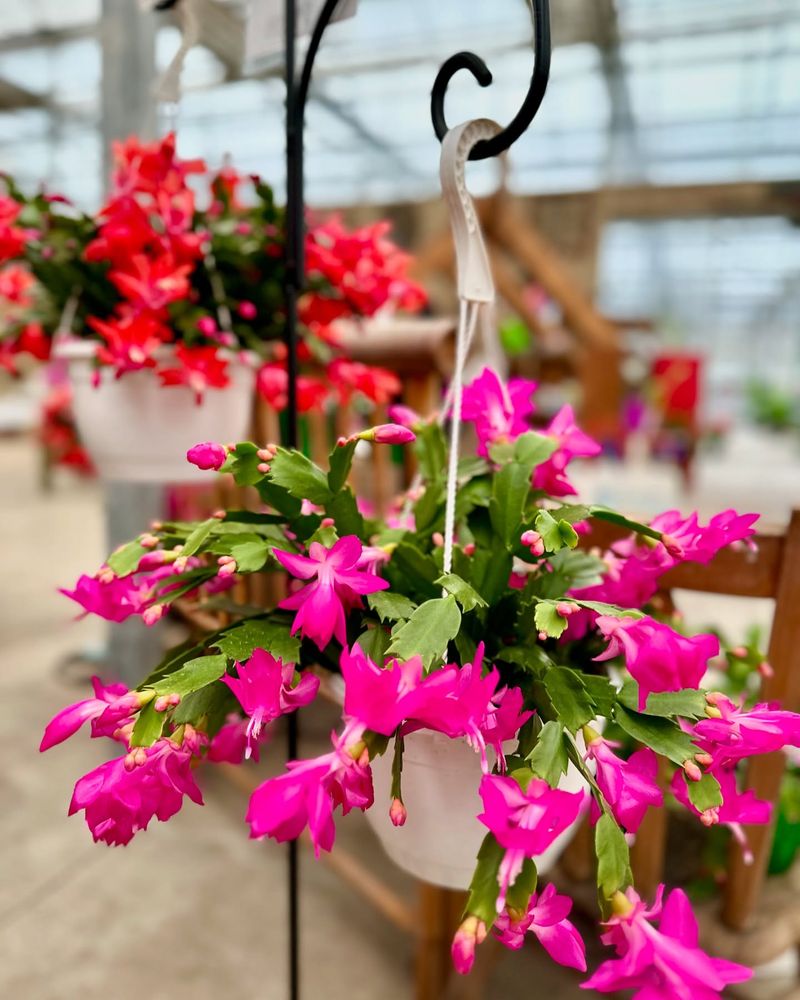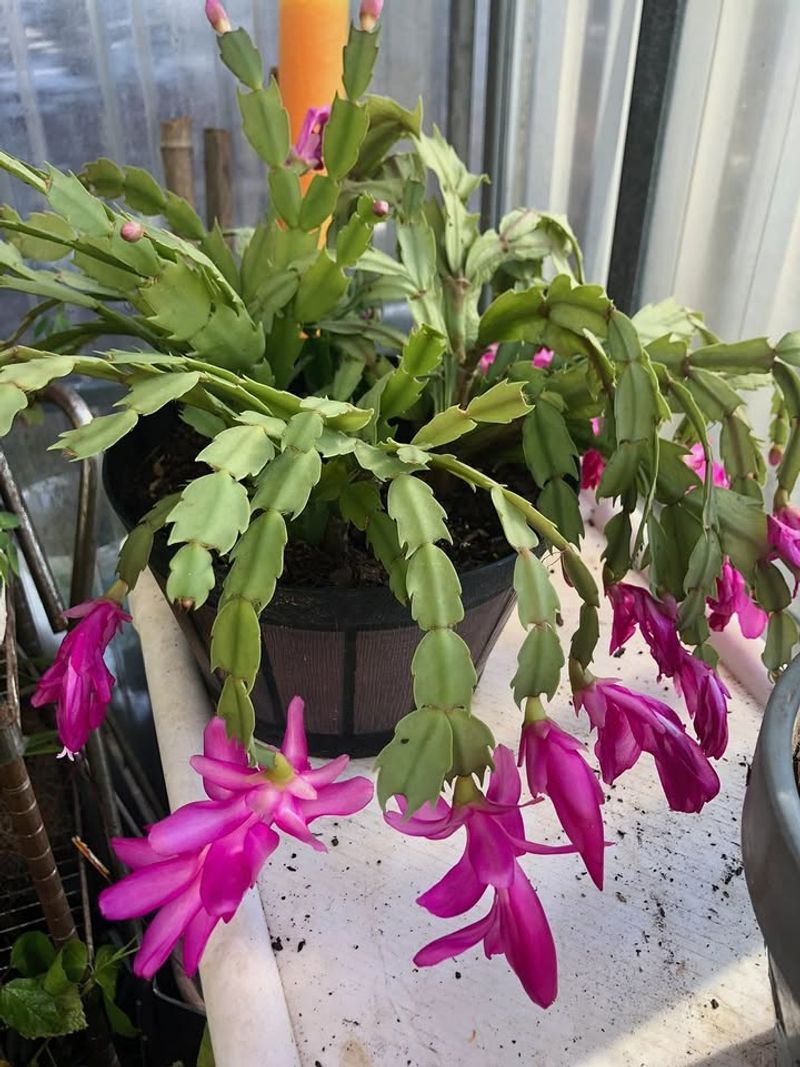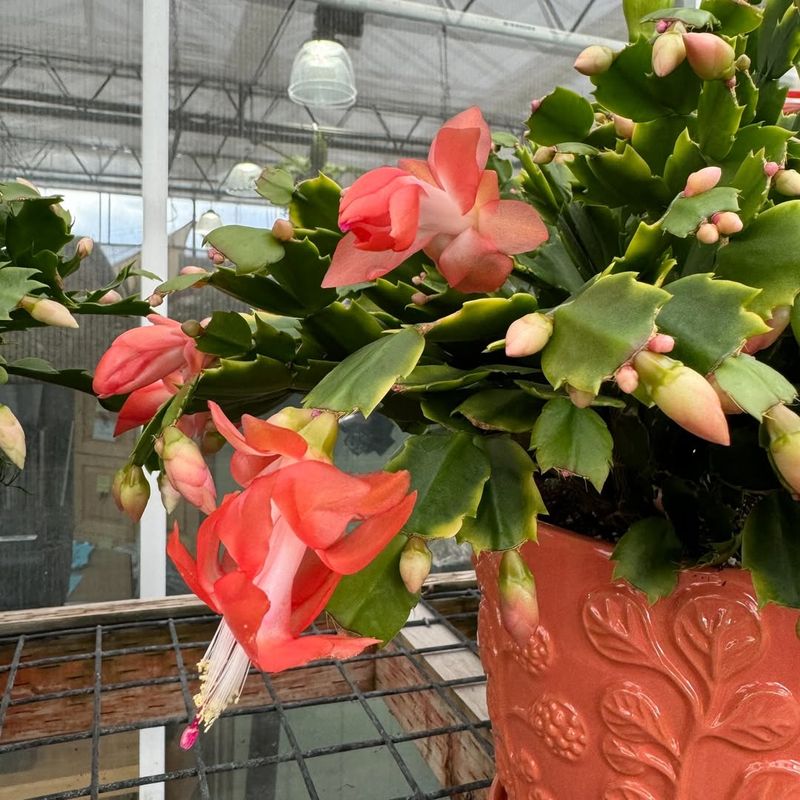Christmas cactus may be famous for its holiday fireworks of blooms, but many Texas homeowners watch theirs sit tight-lipped in December, offering nothing more than green pads and silent disappointment.
In a state where winter can swing from sweater weather to springlike warmth overnight, this plant gets all the mixed signals it can’t stand.
Instead of setting buds, it hits the pause button, trying to figure out what season it’s in.
Add in bright indoor lighting, warm rooms, and a watering schedule that’s just a bit too generous, and the poor cactus hardly stands a chance of kicking into bloom mode.
The truth is, Christmas cactus needs a little tough love, cooler nights, darker evenings, and a steady routine, to deliver those cheerful holiday flowers.
When Texans unknowingly skip these cues, the plant simply digs in its heels.
Understanding what flips its internal switch is the secret that turns a stubborn cactus into a December showstopper.
Too Much Light Exposure At Night
Christmas cacti need complete darkness for at least 12-14 hours each night to trigger blooming.
Many Texas homes keep porch lights, street lamps, or indoor lighting on late into the evening, disrupting this crucial dark period.
Even small amounts of artificial light sneaking through windows can confuse your plant’s internal clock.
Your cactus thinks it’s still summer when it senses light during nighttime hours.
Consider moving your plant to a completely dark room or closet each evening starting in October for best results.
Warm Texas Temperatures Indoors
Blooming requires cooler nighttime temperatures between 50-65 degrees Fahrenheit for several weeks.
Texas homeowners often keep their thermostats set much higher during fall and early winter months.
Your plant needs that temperature drop to signal that blooming season has arrived.
Without cooler conditions, the cactus stays in its regular growth phase instead of preparing flowers.
Try placing your plant in an unheated garage, enclosed porch, or cooler bedroom at night during September and October.
Inconsistent Watering Schedules
Did you know that erratic watering confuses your Christmas cactus and prevents bud formation?
These plants need slightly drier conditions in fall to trigger their blooming cycle properly.
Many well-meaning plant owners water too frequently or forget completely, creating stress that stops flower production.
Your cactus responds to consistent moisture patterns, not random drenching followed by drought.
Water lightly when the top inch of soil feels dry, reducing frequency as fall approaches to encourage blooming.
Wrong Pot Size Issues
Believe it or not, Christmas cacti actually bloom better when they’re slightly root-bound in smaller containers.
Texas gardeners often repot their plants into larger pots thinking they’re helping, but this actually delays flowering.
A plant swimming in too much soil focuses energy on root growth rather than producing beautiful blooms.
The snug fit of a smaller pot creates just enough stress to trigger the flowering response.
Keep your cactus in the same pot for several years unless roots are literally bursting out.
Excessive Fertilizer Application
Over-fertilizing creates lush, green growth but tricks your plant into staying in vegetative mode instead of blooming mode.
Many Texas homeowners feed their cacti too often with nitrogen-rich fertilizers throughout the year.
Your plant becomes too comfortable and sees no reason to produce flowers for reproduction.
High nitrogen levels especially promote leaf growth at the expense of bud development.
Stop fertilizing completely by late August, and use a low-nitrogen, bloom-boosting formula sparingly during the growing season.
Sudden Environmental Changes
Moving your Christmas cactus around the house frequently stresses the plant and causes buds to drop before opening.
Once your cactus sets buds, it becomes extremely sensitive to any changes in its environment.
Temperature shifts, different light angles, or even rotating the pot can shock the plant.
Texas homeowners often relocate their cacti to display them during the holidays, not realizing this causes bud drop.
Choose one spot in early fall and leave your plant completely undisturbed until after blooming finishes.
Plant Age And Maturity Level
Young Christmas cacti under two years old simply aren’t mature enough to produce flowers reliably.
Many Texas homeowners purchase small starter plants or propagate cuttings, then expect immediate blooms that first December.
Your baby plant needs time to develop a strong root system and adequate leaf segments before channeling energy into reproduction.
Patience pays off as older, established plants bloom more abundantly each year.
Give young plants two to three growing seasons before expecting spectacular flower displays during the holidays.








